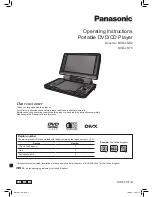
1-2
6880907Z66-O
June, 2000
Introduction
GTX Mobile Radio Installation Manual
Electromagnetic Interference/Compatibility
• Institute of Electrical and Electronic Engineers
(IEEE) C95.1-1999 Edition.
• National Council on Radiation Protection and
Measurements (NCRP) of the United States,
Report 86, 1986.
• International Commission on Non-Ionizing
Radiation Protection (ICNRP) 1998.
• National Radiological Protection Board of the
United Kingdom, 1995.
• Ministry of Health (Canada) Safety Code 6.
Limits of Human Exposure to Radiofrequency
Electromagnetic Fields in the Frequency Range
from 3 kHz to 300 GHz, 1999.
• Australian Communications Authority Radio-
communications (Electromagnetic Radiation -
Human Exposure) Standard 1999 (applicable to
wireless phones only)
To assure optimal radio performance and to make sure
human exposure to radio frequency electromagnetic
energy is within the guidelines set forth in the above
standards, always adhere to the following procedures:
Electromagnetic Interference/
Compatibility
NOTE
Nearly every electronic device is suscep-
tible to electromagnetic interference
(EMI) if inadequately shielded, designed
or otherwise configured for electromag-
netic compatibility.
• To avoid electromagnetic interference and/or
compatibility conflicts, turn off your radio in
any facility where posted notices instruct you to
do so. Hospitals or health care facilities may be
using equipment that is sensitive to external RF
energy.
Operational Warnings
For Vehicles with an Air Bag
WARNING
Do not install a mobile radio in the area
over an air bag or in the air bag deploy-
ment area. Air bags inflate with great
force. If a mobile radio is installed in the
air bag deployment area and the air bag
inflates, the radio may be propelled with
great force and cause serious injury to
occupants of the vehicle.
Potentially Explosive Atmospheres
WARNING
Turn off your two-way radio when you
are in any area with a potentially explo-
sive atmosphere, unless it is a radio type
especially qualified for use in such areas
( f o r
e x a m p l e ,
F a c t o r y
M u t u a l
Approved). Sparks in a potentially
explosive atmosphere can cause an
explosion or fire resulting in bodily
injury or even death.
Blasting Caps and Areas
To avoid possible interference with blasting opera-
tions, turn off your radio when you are near electrical
blasting caps, in a blasting area, or in areas posted:
“Turn off two-way radio”. Obey all signs and instruc-
tions.
NOTE
The areas with potentially explosive
atmospheres referred to above include
fueling areas such as: below decks on
boats or chemical transfer or storage
facilities; areas where the air contains
chemicals or particles, such as grain, dust
or metal powders; and any other area
where you would normally be advised to
turn off your vehicle engine. Areas with
potentially explosive atmospheres are
often but not always posted.
Mobile Antenna Installation
Mobile Radio Operation and EME
Exposure
Observe the following caution and electromagnetic
energy exposure (EME) statements when installing
antennas:
CAUTION
Use caution when installing antennas
with mobile radio equipment using
transmitter power of 7 W or greater.
Install antennas only on metal bodied
vehicles.
NOTE
For low-power mobile radios (less then
7 W) there are no antenna type or instal-
lation restrictions.
To assure optimal radio performance and that human
exposure to radio frequency electromagnetic energy is
within the guidelines referenced in this document,
transmit only when people outside the vehicle are at
!





































